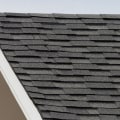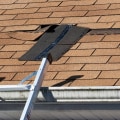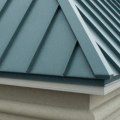Spray foam roof systems (SFRS) are becoming increasingly popular as a reliable and cost-effective roofing solution for commercial buildings. These systems offer superior insulation, flexibility, and durability that can help reduce energy costs while also increasing structural stability and protecting against extreme weather conditions. This article provides a comprehensive overview of SFRS, including its advantages, installation process, and maintenance requirements. SFRS is a highly versatile roofing system that can be customized to meet the unique needs of each building. It can provide excellent insulation without compromising the structural integrity of the building, and it is also available in various colors and textures to provide an aesthetically pleasing finish.
Additionally, SFRS can be installed quickly with minimal disruption to the building or its occupants. It is an ideal choice for businesses looking for a reliable and long-lasting roofing solution. In this article, we will explore the benefits of SFRS in greater detail and provide an overview of the installation and maintenance processes. We will also discuss the various types of spray foam roof systems available, their advantages and disadvantages, and their potential impact on a building’s energy efficiency. Finally, we will provide a few tips for choosing the right system for your commercial building.
Potential Drawbacks of Spray Foam Roof Systems
Although spray foam roof systems (SFRS) offer numerous benefits, there are a few potential drawbacks to consider before choosing this roofing option.One of the main drawbacks is the high initial cost of installation. This type of roofing system requires specialized equipment and materials, and professional installation is recommended for the best results. The cost of the materials and labor can add up quickly. Additionally, because SFRS is a relatively new technology, it may be difficult to find experienced contractors in some areas. In addition to the cost, SFRS can be more difficult to repair and maintain than traditional roofing options.
The foam must be cut away to access the area needing repairs, and then reapplied. Furthermore, the foam must be inspected regularly to ensure there are no signs of wear or damage that could lead to water leakage or other issues. Finally, SFRS is not suitable for all climates. In areas that experience extreme temperatures, the foam can become brittle and prone to cracking, which can lead to leaks.
It is important to check with a qualified contractor before installing SFRS in areas with extreme temperatures.
Benefits of Spray Foam Roof Systems
Spray foam roof systems (SFRS) offer many advantages over traditional roofing solutions. Their energy efficiency, durability, and ease of installation make them an ideal choice for commercial buildings.Energy Efficiency
SFRS are highly energy efficient because they create an airtight seal on the building's exterior. This helps to keep heated and cooled air inside the building, and reduces energy costs associated with cooling and heating.SFRS also have excellent thermal insulation properties, which helps to keep the building comfortable year-round.
Durability
SFRS are incredibly durable and can withstand extreme weather conditions. They are also resistant to fire, mold, mildew, and other damage caused by moisture. Additionally, SFRS can last up to two decades before needing to be replaced.Ease of InstallationSFRS are easy to install and require minimal maintenance. The installation process is relatively quick and straightforward, making it an ideal choice for commercial buildings that need to be completed in a timely manner. Additionally, once the SFRS is installed, it requires little maintenance or repairs over its lifespan.
Installation Process for Spray Foam Roof Systems
Installing spray foam roof systems (SFRS) is relatively straightforward and can be completed in a few steps. Before beginning, it's important to ensure you have all the necessary tools and materials for the job.Tools and materials you'll need include: foam-based roofing material, sealant, fasteners, protective gloves, safety glasses, respirator, trowel, caulking gun, and measuring tape.
Step 1:
Clean and prepare the surface of the roof. This should include removing any dirt or debris, as well as smoothing out any bumps or uneven spots.Step 2:
Measure and cut the foam-based roofing material to fit the area.Step 3: Apply the sealant around the edges of the roof to ensure a tight seal.
Step 4:
Secure the foam-based roofing material with fasteners.Step 5:
Apply a coat of sealant over the entire surface of the foam-based roofing material.Step 6:
Allow the sealant to dry before applying a second coat.Step 7: Inspect the area to make sure there are no gaps or other areas that need to be sealed or repaired. Once you have completed these steps, your SFRS installation is complete! Regular maintenance should be done to ensure your SFRS remains in good condition.
Maintenance Requirements for Spray Foam Roof Systems
Spray foam roof systems (SFRS) are a popular roofing choice for commercial buildings due to their energy efficiency, durability, and ease of installation. However, just like any other roofing system, regular maintenance is necessary to keep your SFRS in peak condition. In this section, we'll discuss the types of maintenance that should be done on a regular basis to ensure the longevity of your SFRS.Inspections:
Regular inspections of your SFRS are essential to identify any signs of damage or deterioration.This can include checking for cracks or tears in the foam, as well as checking for any areas where the roof has become detached from the walls or other structures. If any of these issues are identified, they should be addressed immediately in order to avoid further damage.
Cleaning:
Regularly cleaning your SFRS will help to prevent the buildup of dirt, dust, and debris that can accumulate over time. This should include removing leaves and other organic matter that can trap moisture and cause damage to the foam. Additionally, it's important to keep an eye out for any signs of mold growth, which can be a sign of a moisture issue.Sealants:
SFRS should be resealed every 3-5 years in order to maintain their waterproofing capabilities.This involves applying a new layer of sealant to the foam in order to prevent water from entering and causing damage. Additionally, it's important to check for any signs of cracking or peeling in the sealant, which can indicate that it needs to be replaced sooner.










